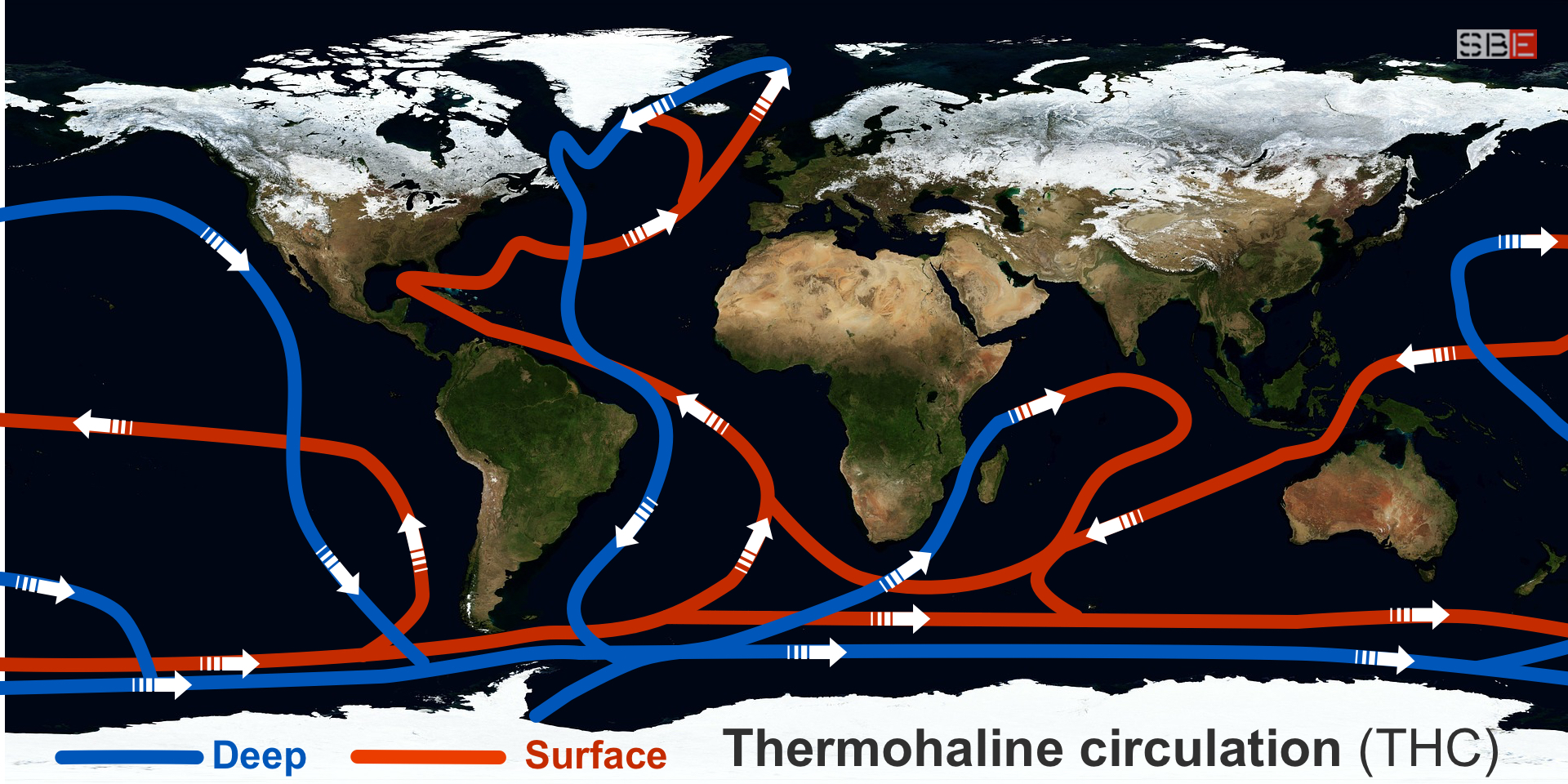Oceanic Current; The Currents in the Mediterranean
An ocean current can be formed in two ways: by density difference or direct wind action.
Two almost entirely independent but connected & inseparable circulation systems (one deep and one superficial) influence the planet’s global climate, weather and marine biology.
The thermohaline circulation represents a simplified model of the entire oceanic circulation. This so-called “Ocean Conveyor Belt” combines currents that travel across the oceans in a closed circle—rising to the surface or descending in depth according to the density that meets on the way.
These variations in density derive from differences in temperature and salinity—the denser cold water sinks. In contrast, the lower density hot water tends to rise. The salinity – which increases the water density – amplifies or reduces this phenomenon.

The most important and known ocean current that influences the European climate is the Gulf Stream which forms at the equator where the sun heats and evaporates a significant amount of water, thus increasing the concentration of salts. The prevailing winds and the Earth’s rotation push these masses of hot water towards the North West and then further East on the European coasts.
Releasing heat on its way, the Gulf Stream slows down and splits into two branches.
The first branch heats Northern Europe and increases its density due to evaporation until it sinks for 4000 meters between Greenland and Norway; it then returns to the South. The second branch veers to the South East. It runs along the coasts of Africa at the height of the Canary Islands, returning to feed the North Atlantic Equatorial Current, which returns to the origin of the Gulf Stream, completing part of the general circuit.
The complex movements of water in the oceans generate perpetual currents that move immense masses of water that affect the climate, transporting animals and nutrients, heat, oxygen and CO2. The Gulf Stream is only part of this vast ‘ribbon’ connecting all the seas and oceans.
The currents of the Mediterranean
A complex and singular circulation characterises the Mediterranean sea. Being a sea closed in a sunny basin, it constantly evaporates, with rivers and rainfall unable to compensate for this tendency to empty. It determines an increase in the density of its waters in the sunniest areas and the creation of a deep current that reaches Gibraltar, where it draws the softer surface waters of the Atlantic. Doing this compensates for the water deficit.
The Atlantic current entering the West divides into several branches, overlapping the general circulation.
They are generally weak currents from variable directions influenced by local winds and seasons.
The Italian Hydrographic Institute collects them in the Atlas of the surface currents of the Italian seas.
